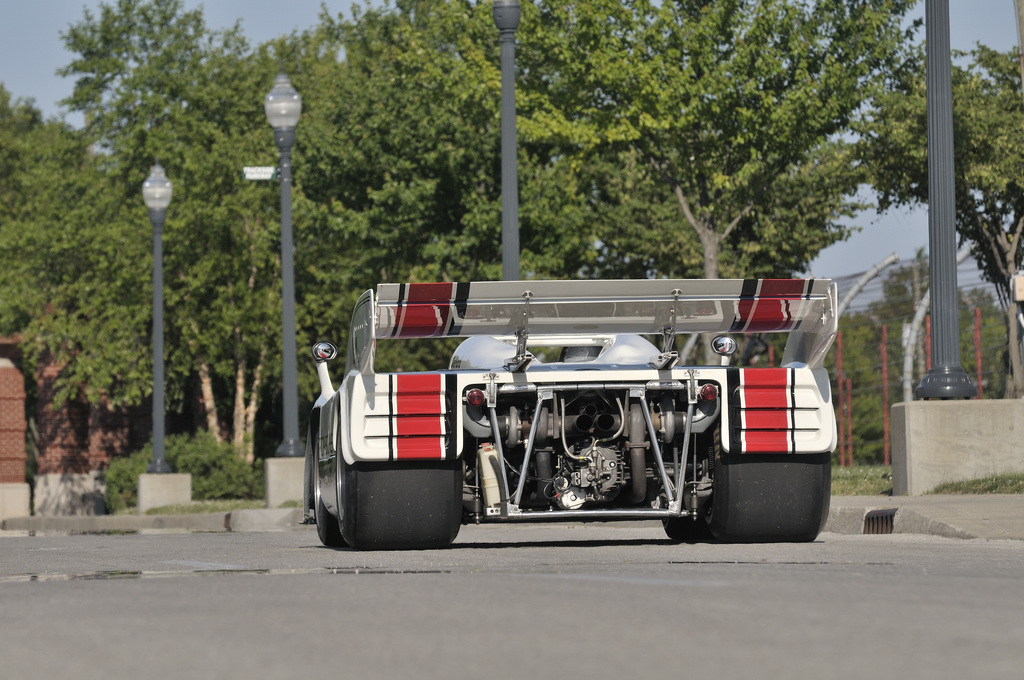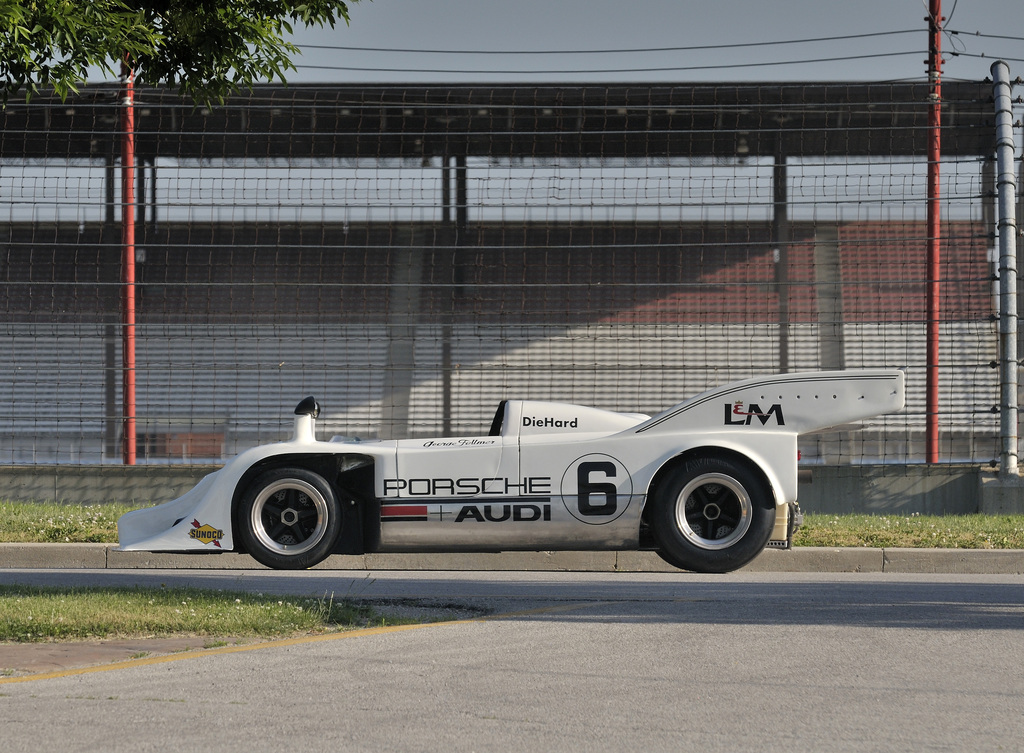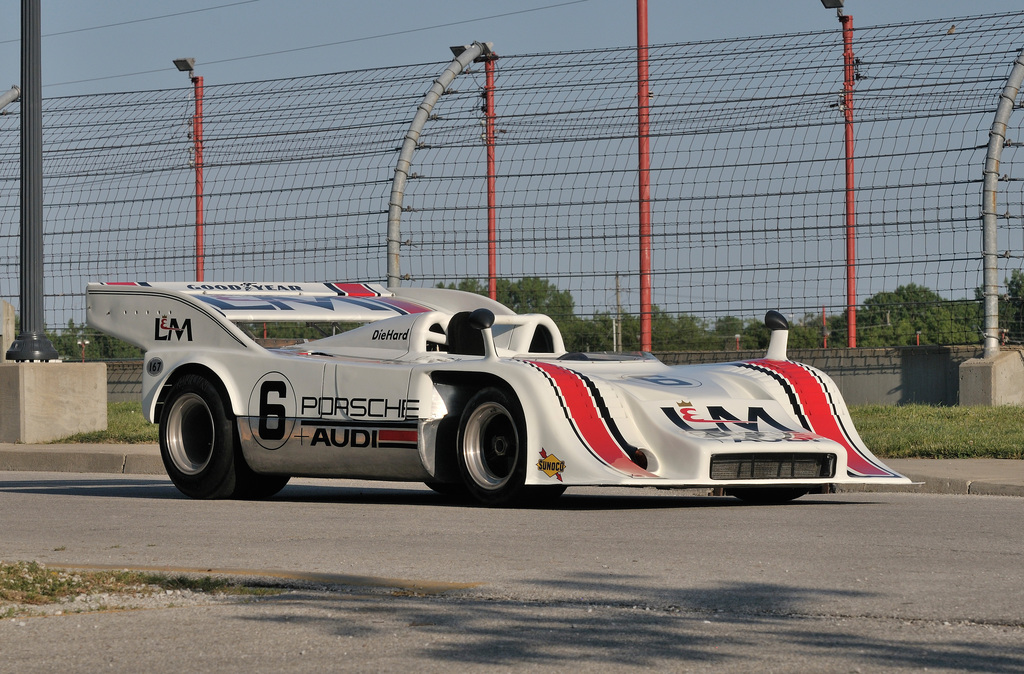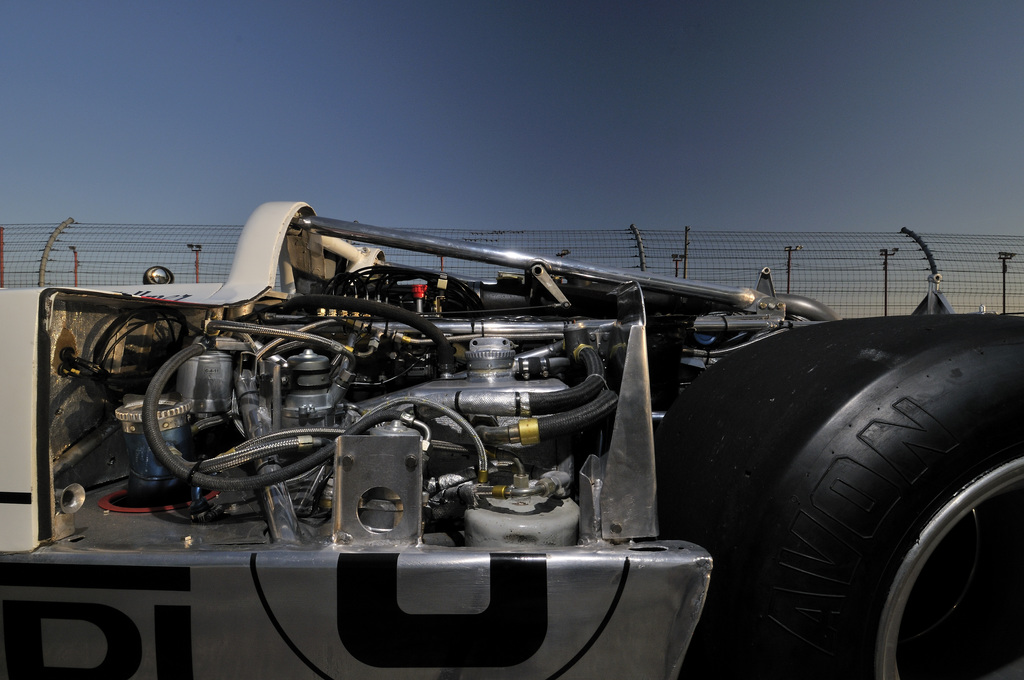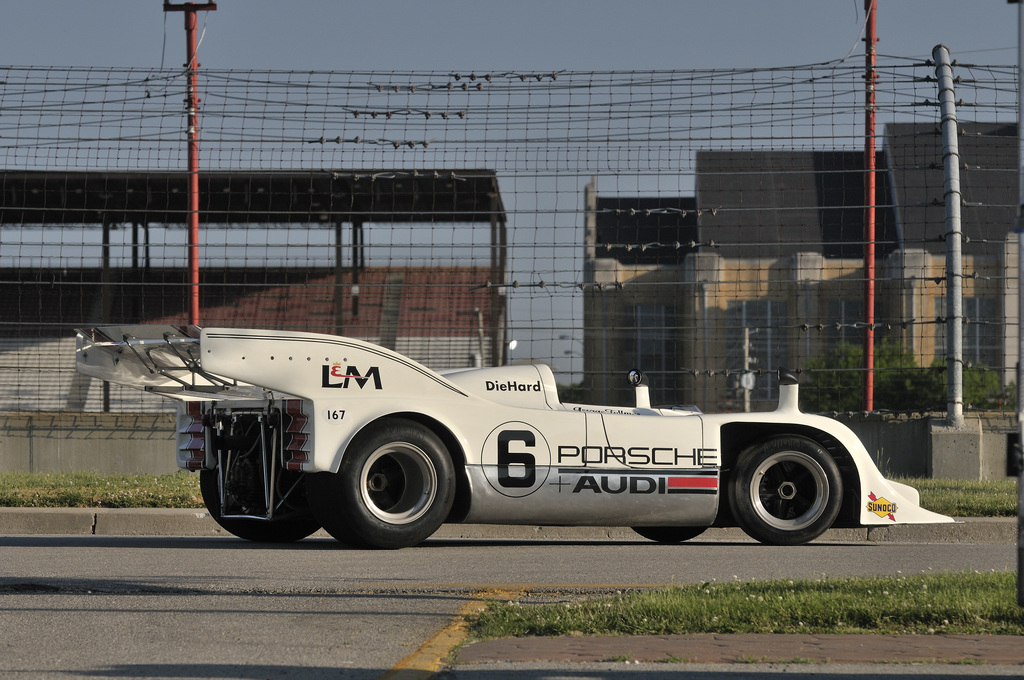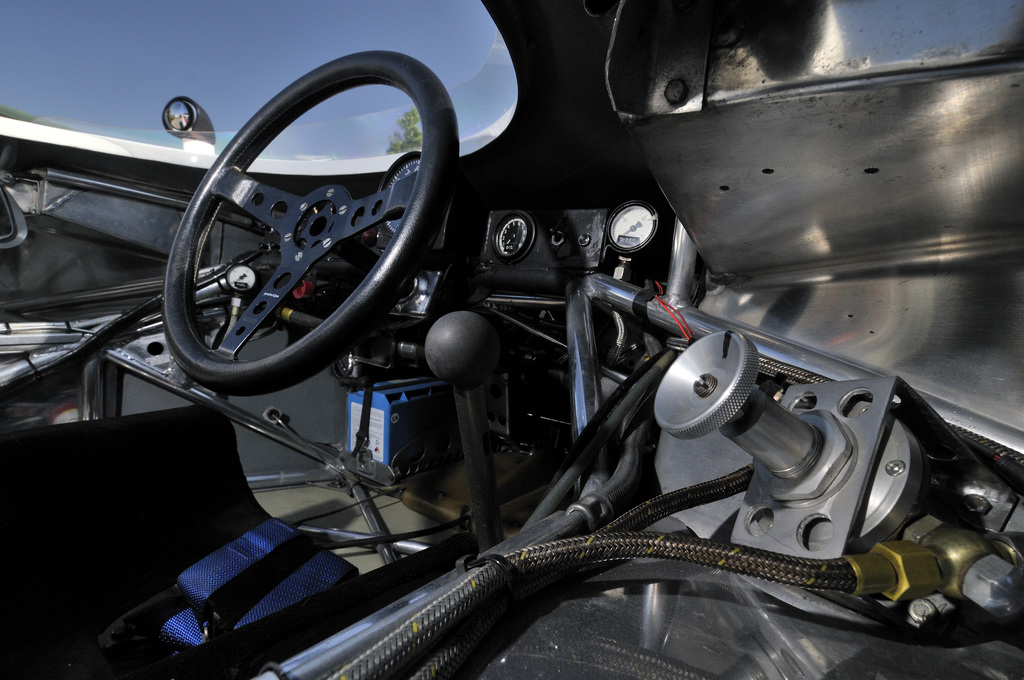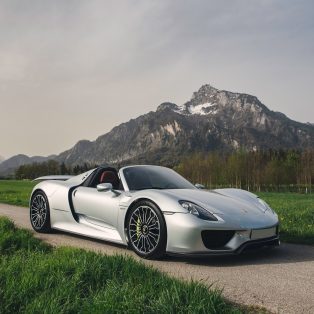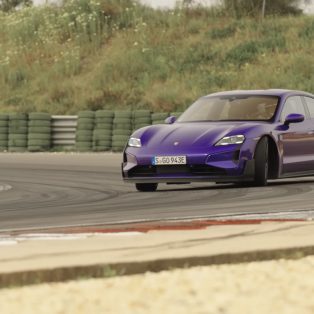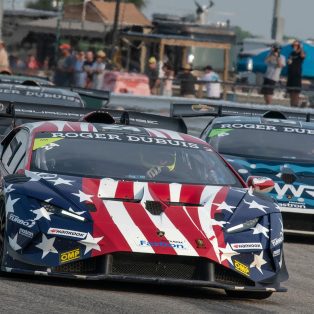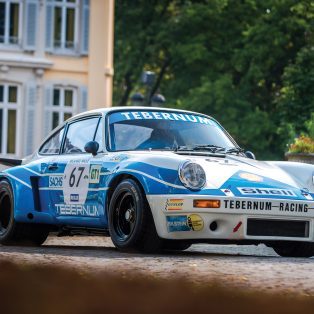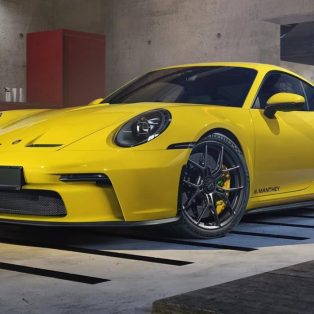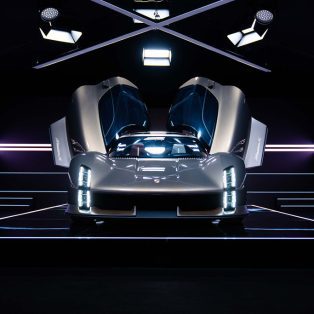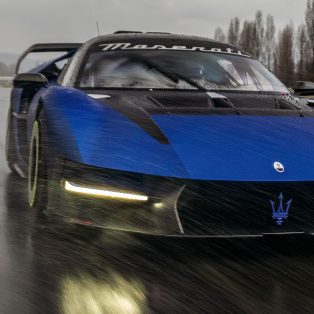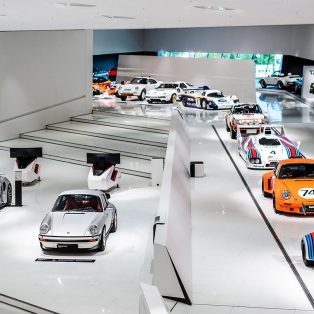1971→1972 Porsche 917/10
After Porsche had won Le Mans twice with the iconic 917 Kurzheck, the engineers at Weissach converted it into a Group 7 contender that had over 1000 bhp by 1973. As a result the L&M Porsche+Audi 917/10 of George Follmer and Penske won the 1972 Can-Am Championship ahead of the typically dominant McLaren team.
The 917/10’s purpose was to promote the new Porsche+Audi dealerships in North America by winning races. In 1969, Porsche raced two of the 917PAs with little success that eventually led to the purpose-built 917/10 and 917/30 turbocharged versions.
The capable team at Weissach under the direction of Hans Mezger and Helmut Flegl created the 917/10 specifically for the 1971 Can-Am season. It was much wider and fitted with massive integrated rear wing that was suitable for the sprint track races in Can-Am. It was also the shortest 917 ever built. Mark Donohue described the 1972 configuration as having “the meanest, wildest, ugliest race car nose in the entire world.”1
Porsche began turbocharging their 12-cylinder engines as early as 1970 to deal with the great power being produced by the enormous American V8s in the McLarens. Engineer Valentin Schäffer was responsible for fitting the two Eberspächer Turbos with a simple intake-to-exhaust wastegate system.1
First tests with 917/10-001 as driven by Jo Siffert were fleeting with a lack of instant throttle response. He later personally fielded the second 917/10 with STP sponsorship in the 1971 Can-Am season with a few podium finishes.
For 1972, Porsche decided to team up with Penske and Mark Donohue who had prepared one of the best Ferrari 512s in 1971. Porsche also withdrew their factory team in the World Sportscar Championship to focus solely on Can-Am. Their move was highly successful by eventually winning the 1972 championship outright.
With L&M Cigarettes livery, the Penske Porsches were developed by Porsche and Mark Donohue working in concert. The heavily revised intake, new titanium valves and increased cooling allowed the engineers to produce a reliable 18~20 psi and 800 bhp for Penske. Furthermore, a recalibrated Bosch fuel injection unit and intake manifold relief valves improved the poor throttle response from 1971.
To manage the typical 900 bhp that the Penske Porsche put down, Porsche revised the gearbox within the same magnesium housings. Furthermore, at Mark Donohue’s request, the reverse gear was omitted and the rear differential was locked at 100%.1
During the 1972 season, the Penske Porsches suffered from occasional technical issues that only prevented them from winning every single race. Mid-season Mark Donohue suffered a bad accident in a lightweight magnesium car during tesing and was sidelined. He was replaced by George Follmer who later won five races and the championship.
Follmer says the car “will always be special for me. I got very familiar with it. I could do almost anything I wanted with it. I could make it go as fast as it could go… The ’72 season was kind of memorable because I won the Trans-Am series too.”2
During the same year, Leo Kinnunen was dominating the Interserie in Europe with his 917/10 that was turbocharged mid-season for the Finnish AAW Racing Team.
For 1973, Valentin Schäffer had completed the 5.4-liter engine which produced considerably more power at 1100 bhp at 7800 rpm. The entire 917/10 outfit from Penske was sold to Rinzler Motorracing Royal Crown who won the first two races of the season. Later the new Porsche 917/30 of Mark Donohue from Penke steamrolled the rest of the season for the overall championship.
Our feature car is the L&M 1972 Porsche 917/10-003 driven by George Follmer to win the 1972 Can-Am championship. In it, George won at Road Atlanta, Mid-Ohio and Laguna Seca. It was later campaigned by Rinzler Motorracing Royal Crown in #16 RC Cola livery.
Sources & Further Reading
1. Ludvigsen, Karl.Excellence Was Expected. Princeton Publishing Inc. Princeton, 1977.
2. Cox, Stepen. The L&M Porsche Can-Am Champion: Mecum Auctions.
3. Bamsey, Ian.Porsche 917 Kurz. Langheck. Spyder. Foulis & Co ltd, 1987.
4. Hinsdale, Peter.The Fabulous Porsche 917. Haessner Publishing, 1976.
5. Morgan, Peter.Porsche 917: The Winning Formula. Haynes, 1999.
Story by Richard Owen
In Detail
| type | Racing Car |
| production years | 1971 – 1972 |
| built at | Germany |
| engineers | Hans Mezger, Helmut Flegl |
| production | 14 |
| price $ | $ 78,000 |
| succeccesor | 1973 Porsche 917/30 Spyder |
| engine | 912.51 180º Flat 12 |
| position | Stressed Mid Longitudinal |
| aspiration | Twin Turbo |
| ignition | Twin Spark, Dual 12V Distributors |
| block material | RZ5 Magesiumn Alloy w/Chromal Cylinders, Aluminum Alloy Cylinder Heads |
| valvetrain | Gear Driven DOHC, 2 Valves per Cyl |
| fuel feed | Indirect, Mechanical Bosch Fuel Injection |
| displacement | 4494 cc / 274.24 in³ |
| bore | 85 mm / 3.35 in |
| stroke | 66 mm / 2.60 in |
| compression | 6.5:1 |
| engine designer | Valentin Schäffer |
| power | 624.9 kw / 838 bhp @ 8000 rpm |
| specific output | 186.47 bhp per litre |
| bhp/weight | 1074.36 bhp per tonne |
| torque | 833.2 nm / 614.55 ft lbs @ 6600 rpm |
| body / frame | Polyester & Fiberglass Panels over Aluminum Spaceframe |
| driven wheels | RWD |
| front brakes | Internally Vented Discs w/Dual-Circuit Calipers |
| rear brakes | Internally Vented Discs w/Dual-Circuit Calipers |
| steering | Rack & Pinion |
| f suspension | Arms w/Coil Springs, Bilstein Shocks |
| r suspension | Arms w/Coil Springs, Bilstein Shocks |
| curb weight | 780 kg / 1720 lbs |
| wheelbase | 2316 mm / 91.2 in |
| front track | 1620 mm / 63.8 in |
| rear track | 1638 mm / 64.5 in |
| length | 4385 mm / 172.6 in |
| width | 2100 mm / 82.7 in |
| height | 1155 mm / 45.5 in |
| transmission | 4-Speed Manual |
| tran clutch | Borg & Beck Tripple Plate |
| top speed | ~353.98 kph / 220 mph |
| 0 – 100 mph | ~2.9 seconds |
| drag | 0.66 Cd |
| fuel econ epa | 85.53 L/100 km or 2.75 mpg-us |
| fuel capacity | 330 litres or 87.12 gal. |
| key drivers | Mark Donohue, George Follmer |
Auction Sales History
L&M 917/10 Spyder ’72 Can-Am Champion Driven by George Follmer – sold for $5,500,000 Perhaps the world’s most recognized Porsche 917. Team Penske Racing, sponsored by L&M. Driven by racing legends Mark Donohue and George Follmer.Debuted at Mosport ’72 Can-Am driven by Mark Donohue. Dominated the ’72 Can-Am series taking 1st at 5 of 9 races Auction Source: 2012 Daytime Auction
1971 Porsche 917/10 Spyder Can-Am 917/10-002 – did not sell for $2,750,000 The ex-Jo Siffert privately raced 917 spyder. Continuous known history with only five owners from new. Former long-term ownership by Willi Kauhsen, including a highly successful Interserie racing career. Fully restored to original Can-Am specifications. One of the greatest sports racing cars ever built. Extensive history file available for review. Auction Source: Monterey 2012 by RM Auctions
1972 Porsche 917/10-015. Willi Kauhsen campaigned his first 917/10 Spyder, chassis ‘002’ until it was badly damaged in an accident at the Nürburgring late in 1972. He then deployed this car – chassis ‘015’ – in which he achieved the following results in InterSerie racing – winning the 1973 Nürburgring 300kms and Shell Coppa d’Oro (at Imola in Italy), and finishing 2nd in the BRDC Martini Trophy (Silverstone, in England). He then shipped the car to the USA for a brief exploratory incursion into the CanAm Challenge series proper, promptly qualifying 5th fastest at Mid-Ohio in 1973. Back home in Europe he then took the car to war yet again in the InterSerie, and repeated his great 1973 win at Silverstone in 1974. Willi Kauhsen went on to organize his Willi Kauhsen Racing Team (WKRT) operation which carried off the World Championship of Makes title in 1975 with the quasi-works Alfa Romeo 33TT12 sports-prototype cars. Auction Source: 2006





